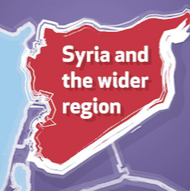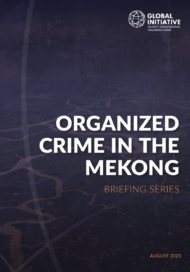Posted on 24 Oct 2016
Evidence of drug seizures shows that captagon has become the major drug in the Middle East, enriching criminal and terrorist networks and fueling conflict across the region, sidelining other drug routes such as the billion-dollar business of Afghan heroin via the Balkan route.
With seizures of 69.5 million pills in Syria, Turkey, Jordan and Lebanon in 2015 alone, the captagon market has exploded. One captagon pill, sold on the streets in the Gulf countries, would fetch US 10-20$. Thus, the market can be estimated at a worth as much as 1.39$ billion. This means that millions of dollars are being raised from drug trafficking and directly benefit different groups involved in the Syrian conflict.
This Global Initiative investigation shows that captagon has become the conflict drug of choice – not only in directly financing the ever deteriorating war in Syria but also slowly fueling the appetite for conflict: Evidence suggests that ISIS is also not only involved in captagon trafficking but also in prescription drug trafficking and abuse (tramadol). Both captagon and tramadol are used by ISIS fighters to suppress feelings of pain, induce feelings of euphoria and thereby increase levels of violence.
In addition, migration and displacement feed into another vicious cycle. As drug trafficking sprawls, so does the potential for increased abuse and addiction by Syrian nationals both within the country and among the refugee populations. Further evidence suggests the increasing vulnerabilities and mental health issues of the displaced population, leading to spiking levels of drug abuse.
This new Global Initiative report, launched on 1st of November, is a timely piece of analysis based on field research in six countries. It examines the dimensions of regional drug trafficking and highlights the troubling consequences for the possible resolution of the Syria conflict and the region’s long-term stability.
This report finds that despite limited reliable information:
- Drug trafficking and its impact on the rule of law is extensive and chronic, and its impact goes beyond the borders of Syria. This must be factored into development implementations in a post-conflict Syria. Development policies should have a mid- to long term focus understanding the local needs and conflicts and development of the rule of law as a cornerstone for success.
- Captagon production within Syria has been occurring for at least a decade. However, the current conflict has merely exploited the breakdown of the rule of law to intensify production and trafficking and added a regional facet to the issue, because
- The current level of conflict within Syria has forced some traffickers to move production of captagon to Lebanon and Turkey and potentially other countries within the region including Sudan. If the conflict worsens for either the regime, FSA, or ISIS and extremist groups, captagon drug trafficking could be moved on a larger scale to neighboring countries.
- It is unclear if ISIS is a net exporter of captagon due to other more reliable sources of funding (oil, extortion). However, there are clear links between tramadol trafficking and ISIS.
- Destination markets for captagon are predominantly in the Arab Peninsula and East Africa with consumption in Turkey and Syria also rising precipitously.
- Overall, drug trafficking and serious organized crime are a significant challenge to some countries in the region, due to newer priorities and limited capacity of law enforcement.




